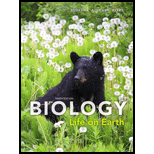
Fill-in-the-Blank
An atom consists of an atomic nucleus composed of positively charged_______ and uncharged _________. The number of positively charged particles in the nucleus determines the________ of the element. Orbiting around the nucleus are ________ that occupy confined spaces called __________. LO2
To review:
An atom consists of an atomic nucleus posed of positively charged ________ and uncharged _________. The number of positively charged particles in the nucleus determines the _______ of the element. Orbiting around the nucleus are _________ that occupy confined spaces are called ________.
Introduction:
Atom is the smallest unit of the element and every atom of that element carry all the chemical properties of that element. Atom also has its own composition and is composed of more smaller particles. Three Subatomic particles together constitute the structure of the atom.
Explanation of Solution
Atom is the basic structural unit of the element. It cannot be further separated into simpler substances and even cannot be converted into another substance just by performing the ordinary chemical reactions. Atoms are composed of even smaller particles; these are considered as subatomic particles. These are neutrons (n), protons (p+), and electrons (e-). Protons carry a positive charge, electrons carry a negative charge, and neutrons carry no charge. Atoms containan equal number of electrons and protons thus providing the overall neutral charge to the atom as their positive and negative charge cancel each other.
Electrons and protons together reside in the center of the atom that is called an atomic nucleus. The small electrons rotate in a continuous rapid motion around the atomic nucleus. The path at which the electrons rotates around the atomic nucleus is considered as the electron shell. Protons present in the nucleus denotes the atomic number
An atom consists of an atomic nucleus posed of positively charged protons and uncharged neutrons. The number of positively charged particles in the nucleus determines the atomic number of the element. Orbiting around the nucleus are electrons that occupy confined spaces called electron shells.
Want to see more full solutions like this?
Chapter 2 Solutions
Biology: Life on Earth
- What symbolic and cultural behaviors are evident in the archaeological record and associated with Neandertals and anatomically modern humans in Europe beginning around 35,000 yBP (during the Upper Paleolithic)?arrow_forwardDescribe three cranial and postcranial features of Neanderthals skeletons that are likely adaptation to the cold climates of Upper Pleistocene Europe and explain how they are adaptations to a cold climate.arrow_forwardBiology Questionarrow_forward
- ✓ Details Draw a protein that is embedded in a membrane (a transmembrane protein), label the lipid bilayer and the protein. Identify the areas of the lipid bilayer that are hydrophobic and hydrophilic. Draw a membrane with two transporters: a proton pump transporter that uses ATP to generate a proton gradient, and a second transporter that moves glucose by secondary active transport (cartoon-like is ok). It will be important to show protons moving in the correct direction, and that the transporter that is powered by secondary active transport is logically related to the proton pump.arrow_forwarddrawing chemical structure of ATP. please draw in and label whats asked. Thank you.arrow_forwardOutline the negative feedback loop that allows us to maintain a healthy water concentration in our blood. You may use diagram if you wisharrow_forward
- Give examples of fat soluble and non-fat soluble hormonesarrow_forwardJust click view full document and register so you can see the whole document. how do i access this. following from the previous question; https://www.bartleby.com/questions-and-answers/hi-hi-with-this-unit-assessment-psy4406-tp4-report-assessment-material-case-stydu-ms-alecia-moore.-o/5e09906a-5101-4297-a8f7-49449b0bb5a7. on Google this image comes up and i have signed/ payed for the service and unable to access the full document. are you able to copy and past to this response. please see the screenshot from google page. unfortunality its not allowing me attch the image can you please show me the mathmetic calculation/ workout for the reult sectionarrow_forwardIn tabular form, differentiate between reversible and irreversible cell injury.arrow_forward
 Concepts of BiologyBiologyISBN:9781938168116Author:Samantha Fowler, Rebecca Roush, James WisePublisher:OpenStax College
Concepts of BiologyBiologyISBN:9781938168116Author:Samantha Fowler, Rebecca Roush, James WisePublisher:OpenStax College
 Biology 2eBiologyISBN:9781947172517Author:Matthew Douglas, Jung Choi, Mary Ann ClarkPublisher:OpenStax
Biology 2eBiologyISBN:9781947172517Author:Matthew Douglas, Jung Choi, Mary Ann ClarkPublisher:OpenStax Biology Today and Tomorrow without Physiology (Mi...BiologyISBN:9781305117396Author:Cecie Starr, Christine Evers, Lisa StarrPublisher:Cengage Learning
Biology Today and Tomorrow without Physiology (Mi...BiologyISBN:9781305117396Author:Cecie Starr, Christine Evers, Lisa StarrPublisher:Cengage Learning





